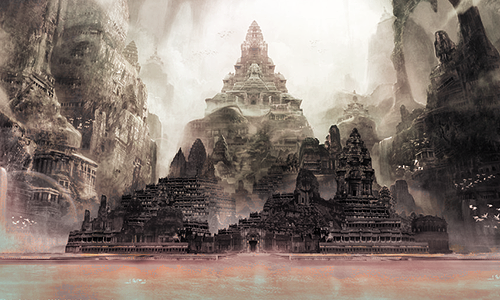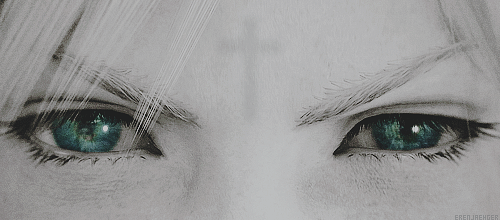Post by EZEL on Dec 12, 2013 14:52:51 GMT -5
RAY DE CAER
Deep within the arid sands of Hueco Mundo lays a chasm so grand, so massive, that miles separate both cliff walls at its center. The scar on the land spans hundreds of miles, and at its deepest, the canyon is cut several thousand feet into the floor. Despite such depth, there remains a constant illumination from a scarred sky with a colorless aurora. In addition, an eerie river of luminescent red flows to and fro, providing a brilliant hue that decorates the desolate and dull stones of the castles that are abundant below. The river, also known as Dios de Lágrima (God's Tears), holds unknown properties, though there exists a stigma from touching its surface and below. Some believe it is a corruption that will consume a soul for all the sin they have committed, other - less faith-driven - inhabitants are convinced it is a poison from Hueco Mundo's core.
Despite the natural beauty of the canyon, what brings life to the land are the thousands of castles that line the walls and floor of the chasm, all intricate in design and architecture. The artistry is present, yet lacks a specific period of time, being pulled from every fathomable era of life. While most seem to mimic the look of Western Europe (gothic, Victorian and Romanesque), there is no shortage of Greek, Roman, Fuedal East Asia, Arabic, Aztecan, etc. Each are filled with hundreds to thousands of inhabitants, and each are embellished fully to simulate the aristocratic lives of human history.
The most solitary castle, while not the largest, is easily recognized as the most important. Dead center within the chasm, surrounded by water-lined walkways and an ample amount of space, is Cielo de Paso, or Heaven's Gateway. The monolith is massive and 12th century French in design, twisted to fit modern expectations. It's structure is lined with windows on each floor, and the inside is abundant in room and vacancy. It is not hard to conclude that the structure is by far the most important within all of Ray de Caer. The innards of the castle is complete with all aspects of a standard castle, the main doors leading to a corridor that opens up into a Grand Hall, hundreds of feet in length and lined with decor fit for the finest. A solitary throne stands firm and alone at the end, placed on a rise of four steps. The throne is ivory and empty, fit for no one but the Lord himself, a tribute to the Great Father. Despite is being the grand hall, it rarely sees activity, and most can be found in the inner courtyard, a place spotted with hundreds of statues, and fountains, the garden itself lacking life. Four separate halls are connected to each wall of the courtyard, and they serve as mess-halls for all of the inhabitants. The majority of the castle beyond that is rarely ventured into by visitors, becoming a massive labyrinth to those not informed of the twisted architecture. As such, all guests rooms are located on the first floor, and anything beyond is typically off limits for the sake of simplicity.



 JULY 9, 2014.
JULY 9, 2014.








